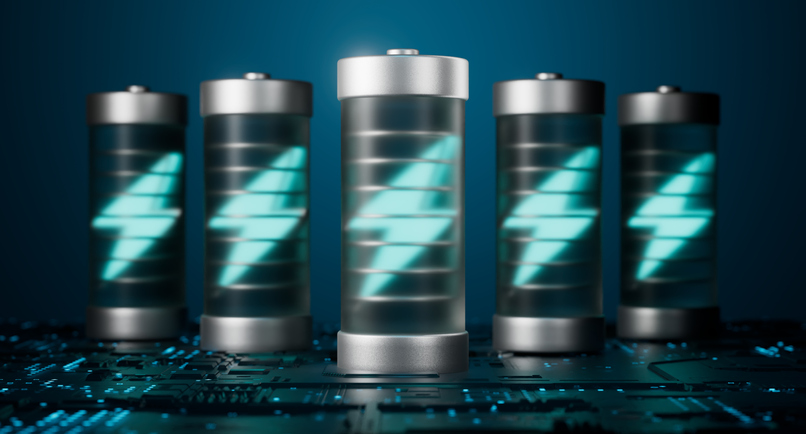While many areas of the globe are still using 4G and even 3G networks—current research activity has been centered around beyond-5G communications to meet the ever-growing demands of tactile communication with immersive user experience. A new generation of wireless mobile telecommunications technology has been released roughly every 10 years since 1G was introduced in the early 1980s. With 5G now firmly in its rollout phase, promising much faster speeds and more connectivity than its predecessors, it is time to look to what’s next.
The race toward 6G has already started with network operators, commercial cellular companies, and academic institutions leading beyond 5G research. Intelligent communication is envisioned as a key enabler for future 6G networks. In a recent IEEE Transactions on Artificial Intelligence letter, researchers discuss state-of-the-art deep unfolded signal processing and machine learning approaches for 6G communication systems.
Immense potential for redefining wireless communication for 6G is emerging through machine learning approaches. As the authors state, “applying traditional signal processing and deep learning approaches independently requires significant computational and memory constraints, but the infusion of domain knowledge into machine learning frameworks can hold the key to future embedded intelligent communication systems”. In the letter, the researchers propose redesigning iterative signal processing algorithms by leveraging deep unfolding techniques to fulfill the physical layer requirements for 6G networks where dense deployments of embedded Internet of Things (IoT) devices are envisioned.
Deep Learning Enables Embedded Edge Platforms
According to the authors, the planned 6G communication will “witness a 3-D communication hierarchy and dense device deployments to support multiple autonomous use cases, such as holographic video conferencing applications and connected autonomous scenarios” (smart grid, smart city, telehealth). Utilizing a deep unfolding physical layer approach via machine learning will be key in all 6G use cases.

Hardware efficient ML at the edge
Machine learning (ML) has attained significant breakthroughs in domains (natural language processing, speech recognition, and computer vision) and is a prominent tool for wireless communications. Deep learning (DL), a subset of ML, has been applied to wireless communication problems (signal recognition, detection, characterization, channel estimation, optimal network resource allocation, error correction coding schemes, and other physical layer applications). The authors envision deep unfolded techniques that perform various receiver operations, such as signal estimation and detection, self-interference (SI) cancellation, and advanced error correction will be essential to the advancement of 6G.
AI Will Drive the Need for Edge Intelligence
Researchers have already started to plan the key enabling technologies to support future 6G communications under different labels, such as 5G+ and beyond 5G. According to the authors, “AI will empower 6G in all aspects from network orchestration and management, physical layer signal processing, and data mining to service-based context-aware communication…the exploitation of ML at the edge will become a primary enabler for 6G communications.”
6G aims at utilizing dense network deployments (massive IoT) involving multiple cells within a macrocell. In the large-scale dense deployments planned for 6G, intelligent physical layer schemes will play a crucial role in fulfilling the service requirements. State-of-the-art DL solutions for wireless communication are computationally complex, requiring powerful computational platforms. To this end, deep unfolding algorithmic unrolling of signal processing models (principled approaches) integrated with trainability using DL strategies is emerging as a scalable and efficient approach.

Methodology for deep unfolded signal processing
Model-driven DL could be the key to enhancing the performance and inference times of communication systems. Traditional signal processing approaches rely on careful parameter tuning, initialization, and step-size selection to offer acceptable performance and convergence speed. In practice, “they are tuned based on heuristics chosen arbitrarily or from exhaustive searches in simulations. However, such heuristic-based selections result in instability and suboptimal performance.” Such deficiencies, the authors argue, can be mitigated by combining the domain knowledge from principled signal processing algorithms with deep learning to yield deep unfolded signal processing.
Look for More Advancements
As part of the discussion section in the letter, the authors review physical layer pertinent signal processing tasks that have been significantly improved with deep unfolding—signal recovery schemes, MIMO detection techniques, and advanced error correction schemes. Specifically in the context of envisioned 6G requirements and how some of these steps will be critical for the next generation of communication networks.
The authors note that “computational simplicity, scalability, accelerated convergence, small memory footprint, and high reliability are key to realizing the 6G communication objectives.” They also mention that despite recent advances in deep unfolded signal processing approaches, there are still open problems that should be investigated in the future. Rapid Online Learning, Efficient Unrolling, Interoperability and Security, and Hardware-Efficient ML at the Edge are all topics that require research.
View the full-text article on IEEE Xplore. Read the first page for free. Full article available with purchase or subscription. Contact us to see if your organization qualifies for a free trial.
Interested in Communications technology? Learn more about IEEE's new all-in-one discovery platform for practicing engineers, IEEE DiscoveryPoint for Communications, which includes curated dashboards for 5G, IoT and other hot topics in Telecom to keep users up to late on the latest research, relevant standards, vendor parts & data solutions, industry news and more.





